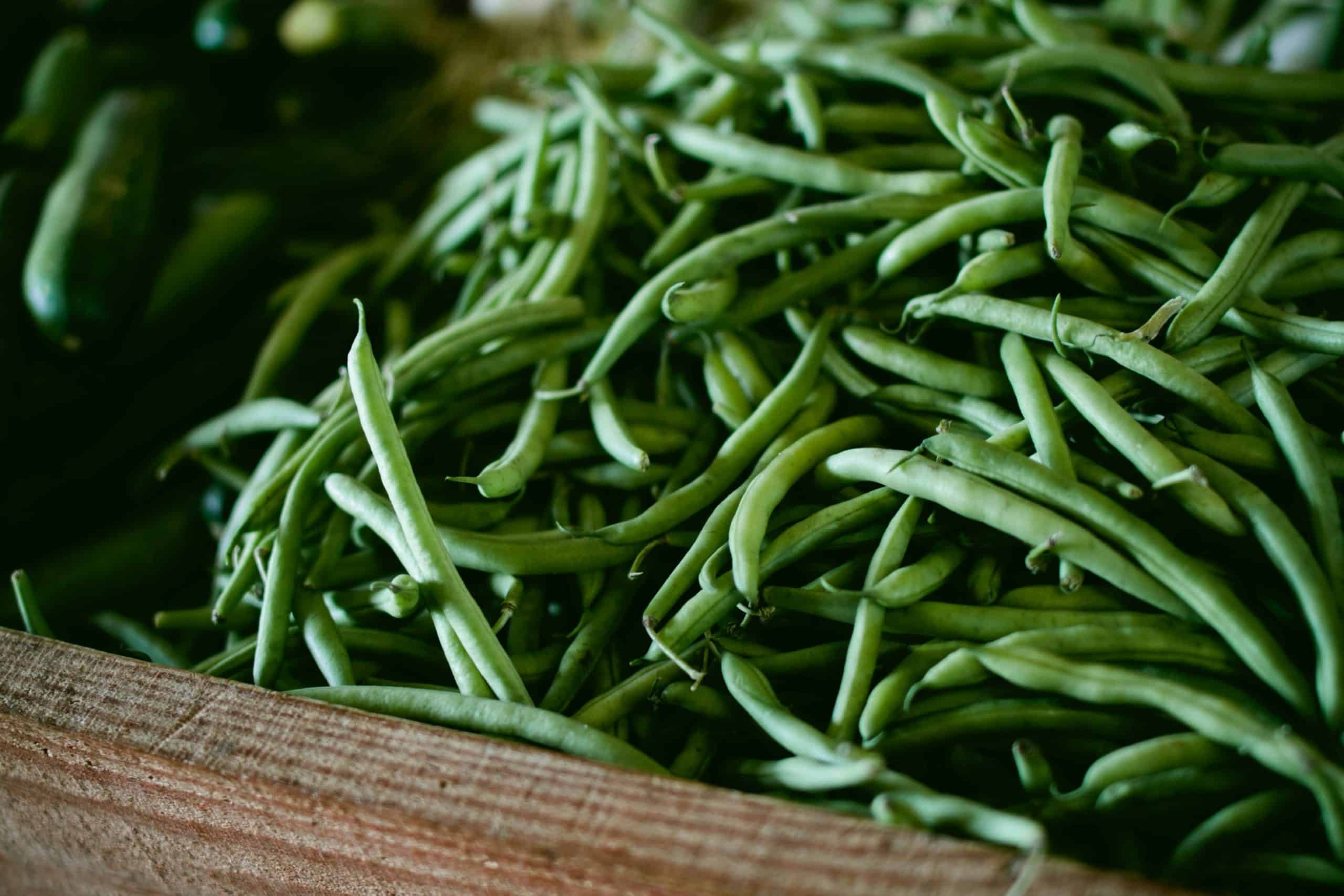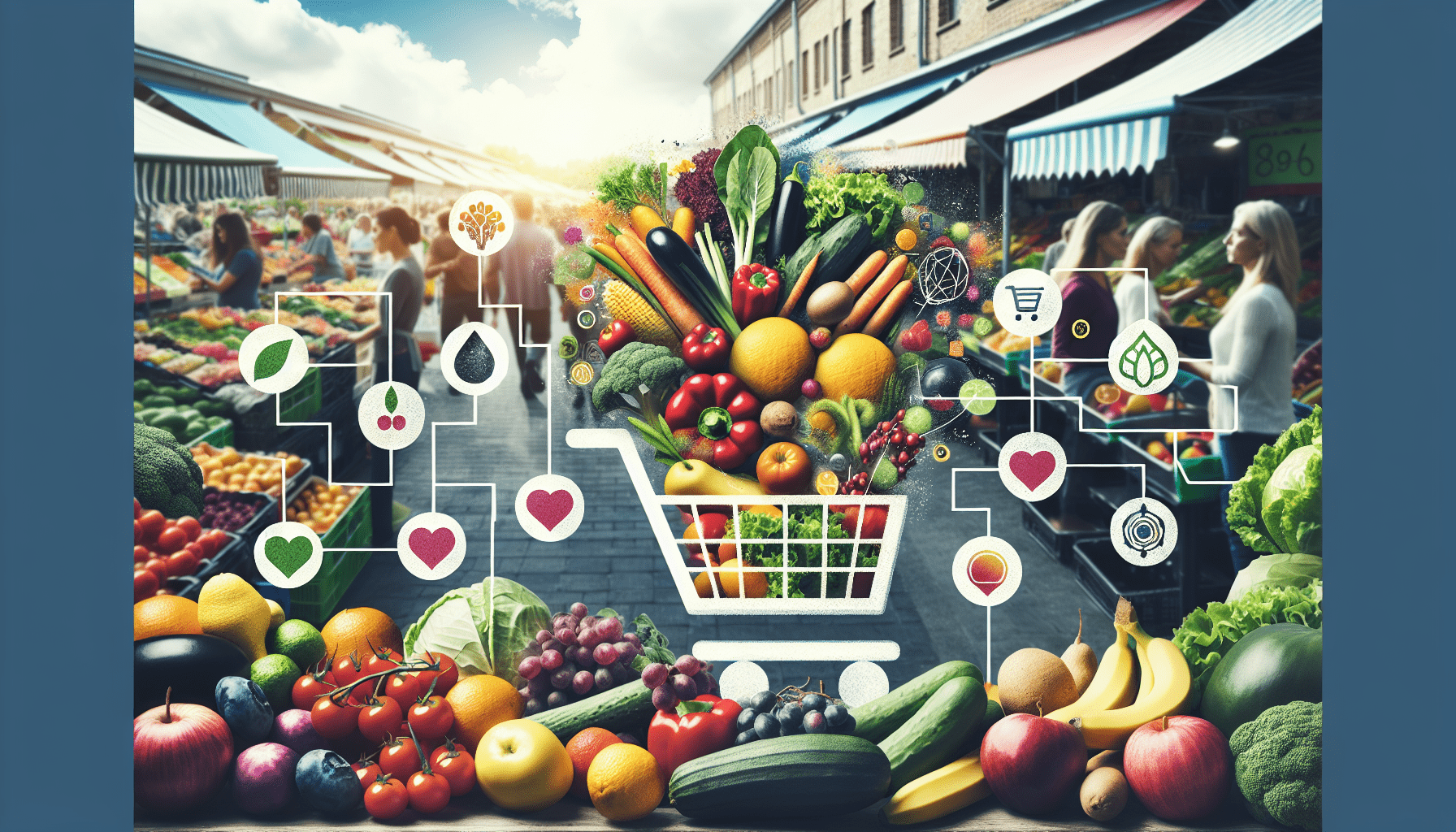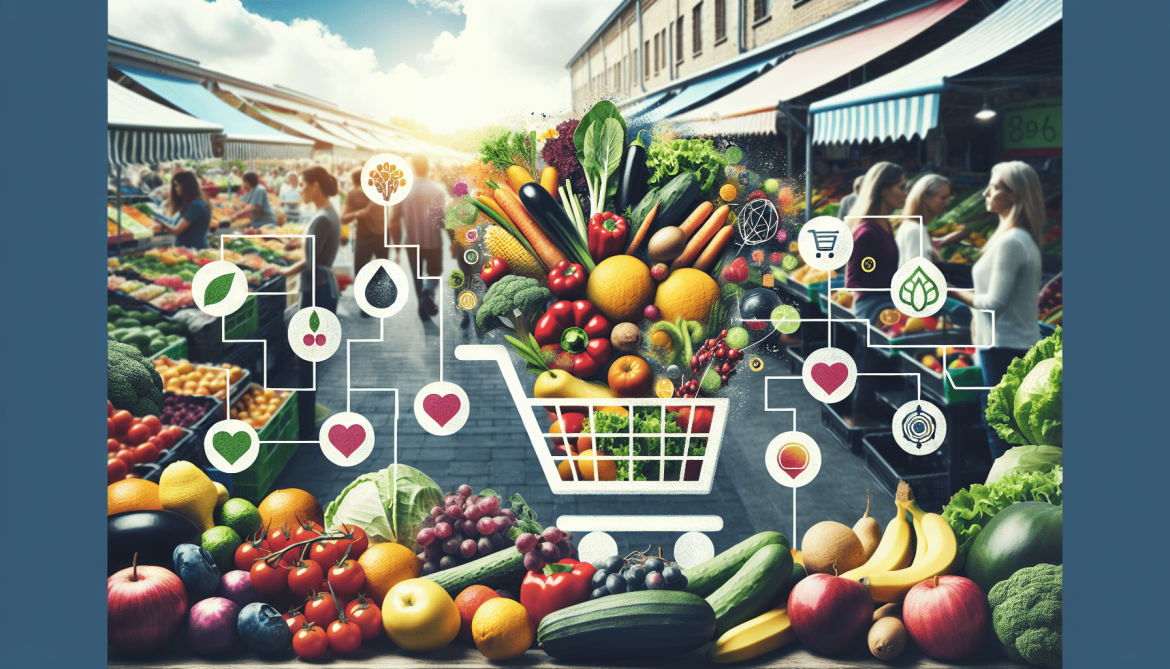Are you looking for an effortless way to save money while improving your health? Look no further than seasonal grocery shopping. By aligning your food choices with the seasons, you can enjoy fresher, tastier produce while also saving a significant amount of money. In this article, we will explore the advantages of seasonal grocery shopping, including reduced costs, increased nutritional value, and a positive impact on the environment. Get ready to embark on a journey towards a healthier and more budget-friendly lifestyle.
Benefits of Seasonal Grocery Shopping
Reduced Cost
Seasonal grocery shopping offers a significant advantage when it comes to saving money. When produce is in season, there is an abundance of it, and farmers and grocery stores often lower their prices to sell it quickly. This means you can get fresh, high-quality fruits and vegetables at a fraction of the cost compared to buying out-of-season produce.
Fresh and Nutritious Produce
Choosing seasonal produce also ensures that you are getting the freshest and most nutritious options available. Fruits and vegetables that are in season are typically harvested at their peak, which means they have higher nutrient content and better flavor. By purchasing seasonal produce, you can guarantee that you are incorporating wholesome foods into your diet.
Environmental Sustainability
Seasonal grocery shopping is not only beneficial for your wallet and health but also for the environment. Buying local, seasonal produce reduces the carbon footprint associated with transportation and storage of out-of-season fruits and vegetables. Additionally, by supporting local farmers who practice sustainable agriculture, you are contributing to the preservation of the environment and the promotion of responsible farming methods.
How to Identify Seasonal Produce
Research Local Harvest Calendar
To be a savvy seasonal shopper, familiarize yourself with the local harvest calendar. Each region has its own set of seasonal produce, so understanding what is available during specific times of the year will help you make informed decisions. Many online resources provide comprehensive harvest calendars for various locations, making it easy to plan your grocery shopping accordingly.
Visit Farmers Markets
Farmers markets are treasure troves of seasonal produce. These bustling hubs bring together local farmers who showcase a wide variety of fruits, vegetables, and other products sourced directly from their farms. By visiting farmers markets, you can witness firsthand what produce is in season, talk to the farmers about their growing practices, and even discover unique heirloom varieties that are not commonly found in supermarkets.
Look for In-season Labels
Supermarkets often label their produce with "in-season" indicators. These labels are useful for identifying which fruits and vegetables are currently at their peak freshness. Keep an eye out for signage or stickers indicating the produce's seasonality, and prioritize purchasing those items. In-season produce is likely to have better taste, texture, and nutritional value.

Planning and Preparing for Seasonal Grocery Shopping
Create a Seasonal Meal Plan
One of the key strategies for successful seasonal grocery shopping is to create a seasonal meal plan. By planning your meals ahead of time, you can identify which seasonal ingredients you'll need and build your grocery list accordingly. Taking the time to outline your meals for each day or week allows you to maximize the use of seasonal produce and ensures that you have a well-balanced and varied diet.
Make a Grocery List
Once your seasonal meal plan is in place, it's time to make a grocery list. Organize your list by categories such as fruits, vegetables, grains, proteins, and pantry staples to make your shopping trip more efficient. Be sure to include the specific seasonal produce you want to purchase, and try to stick to your list to avoid impulse buying or overspending.
Consider Meal Preservation Techniques
If you come across an abundance of seasonal produce or find excellent deals at the store or farmers market, consider utilizing meal preservation techniques. Freezing fruits and vegetables, canning, pickling, and making jams and sauces are all effective ways to extend the life of your seasonal produce. This way, you can enjoy the flavors of the season even after it has passed.
Tips for Cost-saving Grocery Shopping
Compare Prices at Different Stores
To make the most of your grocery budget, take the time to compare prices at different stores. Prices can vary significantly, so do your research and explore local supermarkets, farmers markets, and even online retailers. Keep an eye out for weekly specials or promotions, and consider shopping at discount grocery stores or joining community-supported agriculture (CSA) programs for additional cost savings.
Buy in Bulk
Buying in bulk is an excellent option for staple items or non-perishable foods that you regularly consume. Many grocery stores offer bulk sections where you can purchase items like rice, nuts, pasta, and spices by weight. By buying in larger quantities, you can often secure lower prices per unit and reduce packaging waste.
Use Coupons and Loyalty Programs
Another way to save money while seasonal grocery shopping is to take advantage of coupons and loyalty programs. Many stores offer digital or paper coupons that offer discounts on specific products or provide savings when you spend a certain amount. Additionally, signing up for loyalty programs can earn you points, cash-back rewards, or exclusive discounts reserved for members.
Selecting Fresh and High-quality Produce
Check for Freshness Indicators
When selecting fresh produce, it's essential to look for certain freshness indicators. For fruits, examine the color, texture, and smell. Avoid overly bruised or blemished fruits as they may indicate advanced ripeness or deterioration. With vegetables, crispness and vibrant colors are good signs of freshness. Leafy greens should be crisp and free from wilting or yellowing.
Inspect for Optimal Ripeness
Understanding the optimal ripeness of different fruits and vegetables is crucial to getting the best flavor and texture. For example, avocados and bananas can be bought while still slightly underripe, as they will continue to ripen over time. On the other hand, berries and leafy greens should be consumed within a few days while they are still at the peak of freshness. Pay attention to the ripeness of specific produce to ensure you enjoy it at its best.
Choose Local and Organic Options
Whenever possible, opt for local and organic produce. Local produce is often fresher since it doesn't have to travel long distances, and it supports local farmers in your community. Organic produce is grown without synthetic pesticides and fertilizers, making it a healthier choice for you and the environment. Check for labels indicating local or organic certification to make informed choices.
Health Benefits of Seasonal Eating
Increased Intake of Nutrients
Seasonal eating promotes a diet rich in a variety of nutrients. By consuming fruits and vegetables at their peak freshness, you are maximizing the intake of essential vitamins, minerals, and antioxidants. Eating a diverse range of seasonal produce ensures a well-rounded nutrient profile, which is beneficial for overall health and wellbeing.
More Variety in Diet
Seasonal eating encourages a more diverse diet as you rotate through different fruits and vegetables throughout the year. This variety provides a broader spectrum of nutrients and flavors, keeping your meals exciting and satisfying. Experimenting with new produce each season can introduce you to different tastes, textures, and culinary experiences.
Supporting Gut Health
The fiber content of seasonal produce is beneficial for your gut health. Fruits, vegetables, and whole grains are excellent sources of dietary fiber, which promotes regular bowel movements and supports a healthy gut microbiome. Including a variety of seasonal produce in your diet can contribute to maintaining a balanced and robust digestive system.
Recipe Ideas for Seasonal Produce
Fruit Salads and Smoothies
One of the simplest and most refreshing ways to enjoy seasonal fruits is by making fruit salads or smoothies. Mix and match different fruits based on what is in season, and experiment with different combinations to find your favorite flavors. Add a squeeze of citrus juice or a dollop of yogurt for extra freshness and creaminess.
Vegetable Stir-fries and Roasts
For savory dishes, vegetable stir-fries and roasts are fantastic options. Sauté a mix of seasonal vegetables with garlic, herbs, and spices for a quick and nutritious meal packed with flavors. Roasting vegetables enhances their natural sweetness and creates a caramelized texture, making them a delicious side dish or even a hearty main course.
Seasonal Baked Goods
Embrace the flavors of the season by incorporating seasonal produce into your baking. From comforting apple pies in the fall to zesty lemon bars in the summer, there are countless recipes that highlight the best of each season. Look for baking recipes that feature seasonal fruits or vegetables for a delightful treat.
Preserving Seasonal Produce
Freezing Fruits and Vegetables
Freezing is a simple and convenient method to preserve seasonal produce. Wash and prep your fruits and vegetables, then package them in airtight containers or freezer bags. Blanching certain vegetables before freezing can help retain their texture and color. Frozen fruits and vegetables can be stored for several months and used in various recipes throughout the year.
Canning and Pickling
Canning and pickling allow you to enjoy the flavors of seasonal produce long after its peak. Canning involves preserving fruits, vegetables, or even homemade sauces in sealed jars. Pickling, on the other hand, involves preserving vegetables in a vinegar-based brine. Both techniques require proper sterilization and can extend the shelf life of produce.
Making Jams and Sauces
Creating jams and sauces from seasonal produce is a wonderful way to capture their flavors. Jams can be made by cooking fruits with sugar and lemon juice, while sauces can be created by blending or cooking down vegetables with herbs and spices. Properly canned or jarred, these homemade creations can last for months and be enjoyed throughout the year.

Utilizing Frozen and Canned Produce
Incorporating into Soups and Stews
Frozen or canned produce is great for adding flavor and nutrition to soups and stews. Whether it's frozen peas, canned tomatoes, or corn kernels, these preserved options can be easily incorporated into your favorite recipes. They can enhance the taste and texture of your hearty soups and stews, adding convenience and versatility to your meals.
Using as Toppings or Fillings
Have some canned fruit or frozen berries? Use them as toppings for your breakfast yogurt or oatmeal. You can also use canned vegetables like olives, pickles, or artichoke hearts to elevate your salads or sandwiches. Get creative and find ways to incorporate these preserved options in different meals to add a burst of flavor and texture.
Blending into Smoothies
Frozen fruits and vegetables are perfect for making delicious and nutritious smoothies. Blend together a combination of frozen berries, spinach, yogurt, and a splash of your favorite liquid for a refreshing and energizing drink. Frozen produce makes it quick and easy to whip up a healthy smoothie, packing it with antioxidants and vitamins.
Final Thoughts
Embrace Seasonal Shopping for Cost-saving and Health
By making seasonal grocery shopping a regular part of your routine, you can enjoy the benefits of reduced costs, fresh and nutritious produce, and contribute to environmental sustainability. By being mindful of what's in season, you can make informed decisions that are not only beneficial for your wallet but also for your overall health and the planet.
Experiment with New Recipes and Food Preservation Techniques
Seasonal grocery shopping opens up a world of culinary possibilities. Try out new recipes that feature the freshest produce of each season, and get creative in the kitchen. Additionally, explore various food preservation techniques to extend the life of your seasonal produce, allowing you to enjoy the flavors of each season long after they are over.
Support Local Farmers and Sustainable Agriculture
By prioritizing seasonal produce and shopping at farmers markets or joining CSA programs, you are directly supporting local farmers and sustainable agriculture. This helps foster a resilient and environmentally friendly food system, promoting the growth of local economies and minimizing the carbon footprint associated with long-distance transportation.




